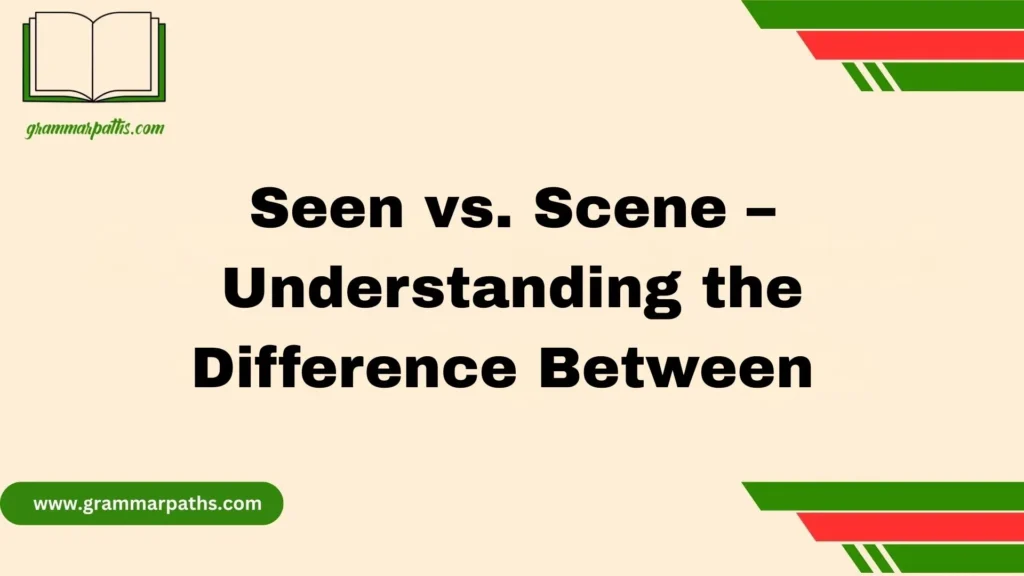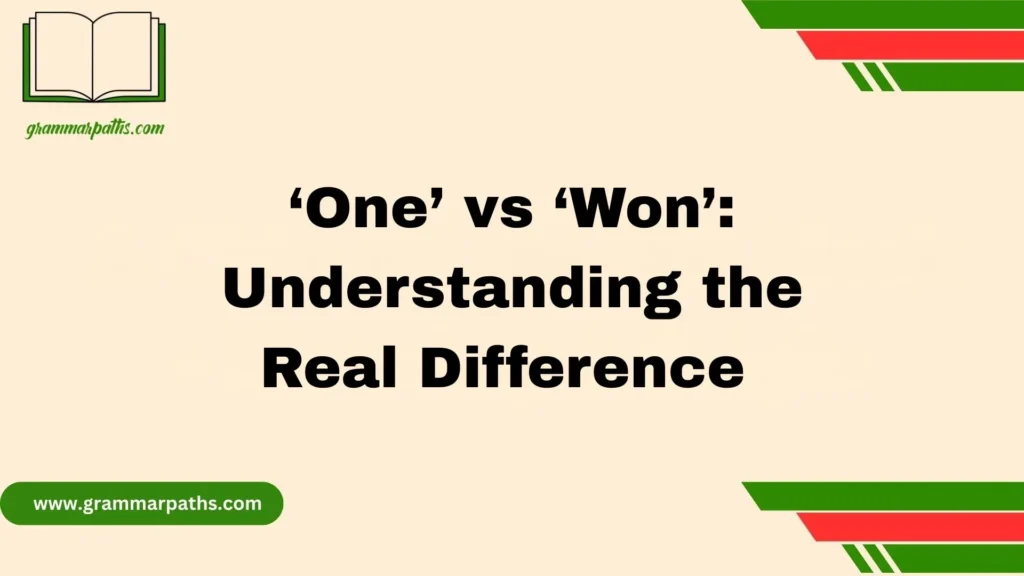Many writers, speakers, and English learners often find the phrase “some of whom” versus “some of who” confusing. From my experience, having a simple, quick guide to using these correctly is key to sharpening your communication and boosting your writing credibility. The secret lies in understanding the basic grammar rules that help you avoid common mistakes.
For example, “some of whom” is used when referring to people who are the object of a sentence, while “some of who” is usually incorrect in formal English. Knowing this important difference can really improve your writing and make your language more precise.
To truly master these phrases, it’s all about paying attention to clear grammar explanations and learning from real-world examples. When you understand the rules and subtle details, you can use these expressions with confidence and clarity.
The learning process involves avoiding common errors and using helpful tips to keep improving. Regularly checking your writing for correctness will help you prevent mistakes and deepen your understanding. With a bit of patience and practice, you’ll master these phrases, ensuring your communication is clear, strong, and polished, while keeping your English usage top-notch.
Why the Confusion Between “Some of Whom” and “Some of Who” Exists
The confusion arises because spoken English has evolved to be more relaxed, often ignoring strict grammar rules. Many people say “some of who” in casual speech without realizing it’s grammatically incorrect in formal writing.
At the same time, modern style guides and grammar checkers are split or sometimes unclear, which adds to the uncertainty. You’ll find “who” used almost everywhere, especially online, but that doesn’t mean it’s always right.
Understanding the difference requires revisiting some core grammar principles that explain why “whom” is the proper choice in certain situations.
Grammar Refresher: The Core Rules Behind “Who” vs. “Whom”
At its heart, the difference between who and whom comes down to subject vs. object in a sentence:
- Who acts as the subject — the one doing the action.
- Whom acts as the object — the one receiving the action or linked with a preposition.
Here’s a quick way to test which to use:
If you can replace the word with “he” or “she,” use who.
If you can replace it with “him” or “her,” use whom.
For example:
- “Who called you?” → “He called you.” (subject) → Use who
- “To whom did you speak?” → “I spoke to him.” (object) → Use whom
Table: Who vs. Whom Quick Guide
| Function | Use “Who” | Use “Whom” | Example |
| Subject of a verb | ✅ | ❌ | “Who won the game?” |
| Object of a verb | ❌ | ✅ | “Whom did you invite?” |
| After a preposition | ❌ | ✅ | “To whom it may concern” |
| Informal speech | ✅ (common but not formal) | ❌ | “Who are you talking to?” |
The Role of Prepositions: Why “Whom” Often Follows Them
One key reason “whom” shows up after “some of” is because “of” is a preposition. Prepositions always require the object form, which is “whom.” This grammatical fact is often overlooked because “of” is a small word, but it’s crucial.
Consider these examples:
- Correct: Some of whom attended the meeting.
- Incorrect: Some of who attended the meeting.
Prepositions like of, to, for, with, by signal that the following pronoun should be whom when referring to people.
Sometimes, the preposition can be implied or “hidden” in the sentence structure, but the rule stays the same. The pronoun after “some of” is always an object, hence “whom.”
“Some of Whom” Is Correct – Here’s Why
When you say “some of whom,” you are combining:
- “Some” — indicating part of a group
- “of” — a preposition connecting “some” to the pronoun
- “Whom” — the object form of “who” used after a preposition
Because “whom” is the object of the preposition “of,” this phrase follows English grammar rules precisely.
Example sentence:
“The candidates, some of whom have extensive experience, will be interviewed next week.”
In this case, “some of whom” introduces a descriptive clause, referring back to the candidates. The pronoun must be in the object form because of the preposition “of.”
Sentence Dissection: How “Some of Whom” Works Grammatically
Breaking it down makes it clearer:
- Some = portion of a group
- Of = preposition connecting to the pronoun
- Whom = object pronoun receiving the preposition
In the sentence:
“She invited many people, some of whom couldn’t attend.”
- “Some” refers to a portion of “many people.”
- “Of” links “some” to the pronoun.
- “Whom” is the object of “of,” correctly placed.
Real-World Usage: Where You’ll See “Some of Whom”
“Some of whom” is common in formal writing, especially:
- Academic research papers
- News articles and journalism
- Legal and official documents
- Professional emails and business writing
- Literary and narrative writing
Case Study: New York Times Excerpt
“The delegates, some of whom traveled from abroad, expressed their concerns during the session.”
This sentence is clear, professional, and grammatically correct. It shows how “some of whom” helps provide additional information smoothly.
“Some of Who” – Why It’s Almost Always Incorrect
People often say “some of who” in informal contexts, thinking it sounds natural, but in formal grammar, it’s wrong.
The issue:
- “Who” is a subject pronoun, but after the preposition “of,” the object pronoun “whom” must be used.
Incorrect example:
“The students, some of who are absent, missed the exam.”
This sentence would be flagged in editing for the incorrect pronoun case.
How to Easily Decide: Tricks for Choosing “Who” or “Whom”
Here are easy hacks to choose between who/whom quickly:
- He/Him Test: Replace “who” or “whom” with “he” or “him.” If “him” fits, use whom.
- Preposition Check: If a preposition (of, to, with) precedes the word, use whom.
- Sentence Role: Is the pronoun doing the action (subject)? Use who. Is it receiving the action or linked by a preposition? Use whom.
“Some of Which” and Non-Human References
When you refer to things instead of people, you use “some of which” instead of “some of whom.”
- Use “which” for animals, objects, ideas, or groups not considered people.
Example:
“The documents, some of which are confidential, will be reviewed tomorrow.”
Summary:
- Whom = people (object form)
- Which = things or non-human references
Examples of “Who” and “Whom” in Real Sentences
| Sentence | Correct Usage | Explanation |
| “The team, some of whom are experts, won.” | Whom | Object after preposition “of.” |
| “Who called me last night?” | Who | Subject of verb “called.” |
| “To whom should I address the letter?” | Whom | Object of preposition “to.” |
| “She is the one who helped me.” | Who | Subject of verb “helped.” |
| “Some of who arrived late.” | Incorrect | “Of” requires object pronoun whom. |
Common Mistakes English Learners (and Natives) Make
- Using “who” instead of “whom” after prepositions
- Forgetting the he/him substitution trick
- Overusing “who” because “whom” sounds formal or old-fashioned
- Mixing up relative pronouns in complex sentences
- Writing informal speech directly into formal writing
Advanced Grammar Notes for Enthusiasts and Editors
Style guides differ on the strictness of whom usage:
- APA Style: Prefers whom in formal writing but accepts who in informal contexts.
- Chicago Manual: Recommends proper use of whom but acknowledges colloquial exceptions.
- Associated Press (AP): Often leans toward who for simplicity, especially in journalism.
Editors should weigh:
- Audience expectations
- Formality of the text
- Flow and readability
Case Studies: Correct Usage in Editing and Copywriting
Before Editing
“The committee members, some of who were unavailable, postponed the meeting.”
After Editing
“The committee members, some of whom were unavailable, postponed the meeting.”
This correction improves clarity, professionalism, and grammatical accuracy.
Key Takeaways and Fast Grammar Reference
- Always use “some of whom” when the pronoun follows the preposition “of” referring to people.
- Use “some of which” for objects, animals, or non-human groups.
- Use the he/him test to decide who vs. whom.
- Don’t shy away from whom in formal writing—it signals precision and polish.
- In informal speech, “who” often replaces “whom,” but avoid this in professional contexts.
Bonus: Mini Quiz to Test Your Knowledge
Fill in the blanks with who or whom:
- The artists, some of ___ work was displayed, are famous.
- ___ is coming to the party tonight?
- To ___ should I send the report?
- The people, many of ___ left early, missed the announcement.
- She is the one ___ helped me yesterday.
Answers:
- whom
- who
- whom
- whom
- who
Final Thoughts: Writing Like a Pro Without Overthinking It
Mastering the difference between some of whom and some of who doesn’t need to be a headache. Using a few simple tricks and understanding basic grammar rules helps you sound confident, clear, and credible.
If you ever get stuck, try rewriting the sentence or using the he/him substitution test. Over time, your ear will sharpen, and these choices will feel natural.
Clear grammar boosts your writing’s authority and readability, whether you’re drafting emails, reports, or creative stories. Use these insights to write smarter and impress your readers every time.

Grace Marie is the dedicated writer behind GrammarPaths.com, where she shares her passion for English grammar, idioms, and writing mastery. With a strong background in language studies and years of experience helping learners improve their communication skills, Grace creates clear, practical, and engaging content that makes English easy to understand.












